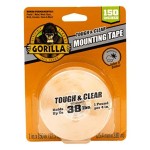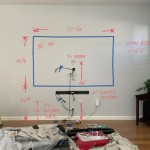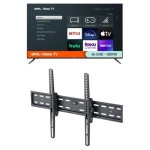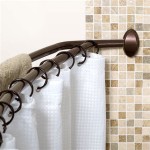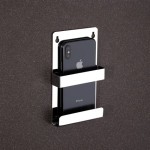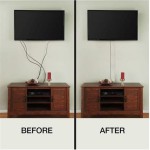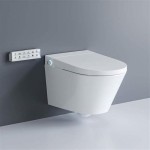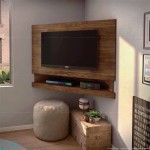What Is The Best Height For A TV Wall Mount?
Determining the optimal height for a TV wall mount is crucial for achieving comfortable and immersive viewing experiences. Incorrect placement can lead to neck strain, eye fatigue, and a diminished enjoyment of the content being displayed. Several factors influence the ideal TV height, including screen size, viewing distance, seating configuration, and personal preferences. Understanding these considerations allows for a more informed decision when installing a wall-mounted television.
Unlike placing a TV on a stand, wall mounting offers greater flexibility in positioning the screen. This flexibility, however, necessitates a deliberate approach to ensure the TV is mounted at a height that optimizes viewing comfort. The following sections detail the key aspects of determining the best TV height for a wall mount.
The 42-Inch Rule and Its Limitations
A commonly cited guideline suggests positioning the center of the TV screen approximately 42 inches from the floor. This "42-inch rule" stemmed from the average eye height of a seated person. While this serves as a starting point, its universal applicability is limited due to variations in seating heights and screen sizes. Applying this rule indiscriminately can result in suboptimal viewing experiences, particularly with larger screens or unconventional seating arrangements.
The 42-inch rule is most relevant when dealing with smaller TVs (32-43 inches) and standard-height sofas. However, as screen sizes increase, the viewing angle from the seating position changes, necessitating adjustments to the mounting height. Moreover, the rise of sectional sofas and recliners, often with higher seat heights, further undermines the blanket applicability of the 42-inch rule. Therefore, while a useful initial reference, it should not be regarded as the definitive answer to the question of optimal TV height.
Calculating Ideal Viewing Height Based on Screen Size and Viewing Distance
A more precise method for determining the ideal TV height involves considering both screen size and viewing distance. A comfortable viewing experience typically entails looking slightly downwards towards the screen. This minimizes neck strain and promotes a more natural viewing posture. The goal is to position the horizontal center of the screen approximately at eye level when seated. However, accounting for a slight downward gaze means positioning it slightly above eye level.
To apply this method, first determine the primary viewing distance – the distance between the TV and the typical seating position. This can be easily measured using a tape measure. Next, consider the vertical height of the TV screen. This information is typically available in the product specifications. With these two measurements, one can calculate the optimal mounting height. A general rule of thumb is to position the lower third of the screen at or slightly above eye level.
For instance, consider a 65-inch TV with a screen height of 32 inches viewed from a distance of 10 feet. If the average seated eye level is 40 inches, the intention is to have the lower third of the screen close to this height. One-third of 32 inches is approximately 10.7 inches. Adding this to the seated eye level (40 inches) results in a mounting height where the bottom of the TV is approximately 50.7 inches from the floor. This example illustrates how to tailor the mounting height to specific screen size and viewing distance.
Accounting for Seating Configuration and Usage Patterns
Beyond screen size and viewing distance, the characteristics of the seating arrangement and the primary usage patterns of the TV are crucial considerations. A formal living room with a traditional sofa typically presents a different set of requirements compared to a dedicated home theater room with reclining chairs. Similarly, a TV primarily used for casual viewing during daylight hours may require a slightly different positioning than one used mainly for cinematic experiences in a darkened room.
In a formal living room, a slightly higher mounting position may be preferred. This accommodates potential stand-up viewing during social gatherings and minimizes the risk of obstruction from furniture or foot traffic. In contrast, a home theater environment benefits from a more immersive setup, often involving a lower mounting position to align the screen with the viewer's eye level when reclining. Reclining chairs often place the viewer in a lower position, thus necessitating a lower mounting point.
Furthermore, consider the potential for future changes in seating arrangements or screen sizes. Choosing a wall mount with sufficient vertical adjustment capabilities allows for fine-tuning the TV height as needed. Some wall mounts offer a greater range of motion, including tilt and swivel features, which can further enhance viewing flexibility. These features can be particularly beneficial in rooms with multiple viewing positions or where glare is a concern.
The angle of the TV in relation to the viewing position also matters. Tilting the TV downward can improve the viewing experience when the TV is mounted higher on the wall, as often is the case above a fireplace. However, excessive tilt can distort the image and create unnatural viewing angles. Adjust the tilt sparingly and only as necessary to compensate for a higher mounting position to prevent viewer strain.
The presence of windows and other external light sources should also be considered. Mounting the TV at a height that minimizes glare on the screen is essential for optimal viewing. In some cases, this may involve compromising slightly on the ideal viewing height to avoid direct reflections from sunlight or artificial lighting. Blinds or curtains can also be used to mitigate glare issues.
Wall Mount Types and Installation Considerations
The type of wall mount chosen can also influence the optimal TV height. Fixed mounts, which hold the TV flush against the wall, offer a clean and minimalist aesthetic but provide no adjustability after installation. Tilting mounts allow for vertical adjustment, which can be useful for fine-tuning the viewing angle. Full-motion mounts offer the greatest flexibility, allowing the TV to be swiveled and extended away from the wall.
When installing a wall mount, it is essential to locate the wall studs to ensure a secure and stable installation. Mounting directly into drywall without proper support can result in the TV falling off the wall, posing a safety hazard. If unsure about the location of wall studs or the proper installation procedure, consulting a professional installer is highly recommended.
Before drilling any holes, carefully measure and mark the desired mounting location. Use a level to ensure that the mount is installed straight. Double-check all measurements and angles to avoid costly mistakes. Pay close attention to the weight capacity of the wall mount to ensure that it is sufficient for the size and weight of the TV. Exceeding the weight capacity can compromise the stability of the mount and potentially damage the TV.
Consider the placement of electrical outlets and cable connections when choosing the mounting height. Concealing cables behind the wall can further enhance the aesthetic appeal of the installation. However, this may require additional wiring and modifications to the wall. Plan the cable management strategy in advance to ensure a clean and organized installation.
Remember safety first when mounting a TV. Ensure that all necessary tools and equipment are available and in good working order. If working at heights, use a sturdy ladder and take appropriate safety precautions. If unsure about any aspect of the installation process, seek professional assistance.

Tv Mounting Height Calculator

Wall Mounted Tvs What Is The Best Height To Mount A Livingroom Tv Nicoll Stewart

How High Should Your Tv Be Mounted Reviews By Wirecutter

The Perfect Position Wall Mounting Guide For Your Tv Ace Sydney Electricians

How High Should A 75 Inch Tv Be Mounted Hellotech

How High Should A Tv Be Mounted And What Is The Ideal Viewing Distance Cepro

How High Should Your Tv Be Mounted Reviews By Wirecutter

Heightfinder Sanus

How High To Mount Your Tv For The Perfect Viewing Experience

How High To Mount Tv In Bedroom For 65 Inch Television Installation Toronto

